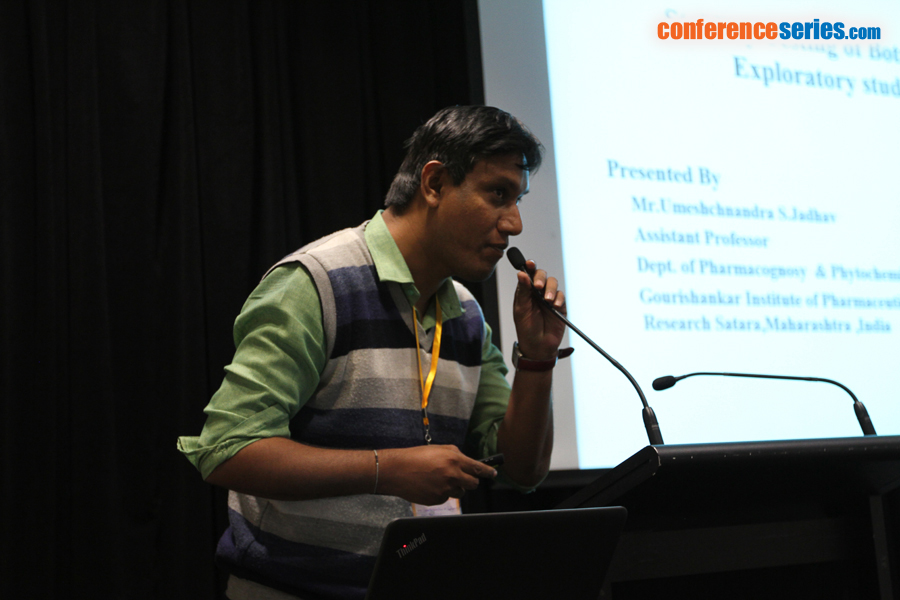
Jadhav Umeshchandra Shivajirao
Gourishankar Institute of Pharmaceutical Education & Research, India
Title: Stability Testing Of Botanicals: An Exploratory Study
Biography
Biography: Jadhav Umeshchandra Shivajirao
Abstract
The role of herbal as drugs, neutraceuticals and dietary supplements is gaining popularity. There have been several examples of poor quality of this products.The formulation and development of botanicals is challenging due to their complex physical and chemical properties. Stability study of herbal is important as instability modifies three important attributes of product i.e. quality, safety and efficacy. Botanicals mentioned under Ayurveda are receiving attention globally. Scientifically validated and technologically standardized botanicals are currently needed for global market. Emblica officinalis is mentioned under Ayurveda as a Rasayana drug and is present in many formulations. In recent years, much success has been obtained in documentation, ensuring contaminants limits, safety and standardization. However, the stability testing has not been adequately addressed. The present study was done as per W.H.O and ICH guidance with the following objectives.
Objectives:
1. To develop the analytical method for Gallic acid estimation using HPTLC and validation as per ICH guidelines. 2. To elucidate the physical, chemical, pharmaceutical and biological attributes of the Amla extract with respect to real and accelerated storage conditions.3.To establish shelf life of spray dried amla extract with respect to storage conditions and retest periods.
Methodology:
Mobile phase optimization: Mobile phase consisting of toluene: ethyl acetate: formic acid: in ratio of (4.0: 5.5: 0.5, v/v/v/v) was optimized and good resolution with Rf value of 0.36 ± 0.02 for Gallic acid was obtained when densitometry scanning was performed at 277 nm.
Method validation: The optimized method validated as per ICH guidelines.
Results:
Pharmaceutical properties were measured i.e. particle size and flow, extract showed poor free flowing properties and very moisture sensitive. It showed significant change in physical (moisture content 4%-7% at real with respect to 4 % -11% at accelerated) Significant change in form was also observed at real time (clumps) and accelerated (cake) at end of six months.
In conclusion, extract when stored at real time showed significant change in physical (moisture content, form) and chemical (peak areas at Rf 0.47) and pharmaceutical (flow and compressibility) properties on 6 months storage. In accelerated conditions, these changes were seen at 1-3 months of storage. Biological stability of extract was studied using DPPH assay.
Conclusion: No significant change in activity was found at 6 months storage at room and accelerated storage This suggests that extract retest period should be within 6 months and proper storage conditions needs to be optimized with respect to container and temperature




